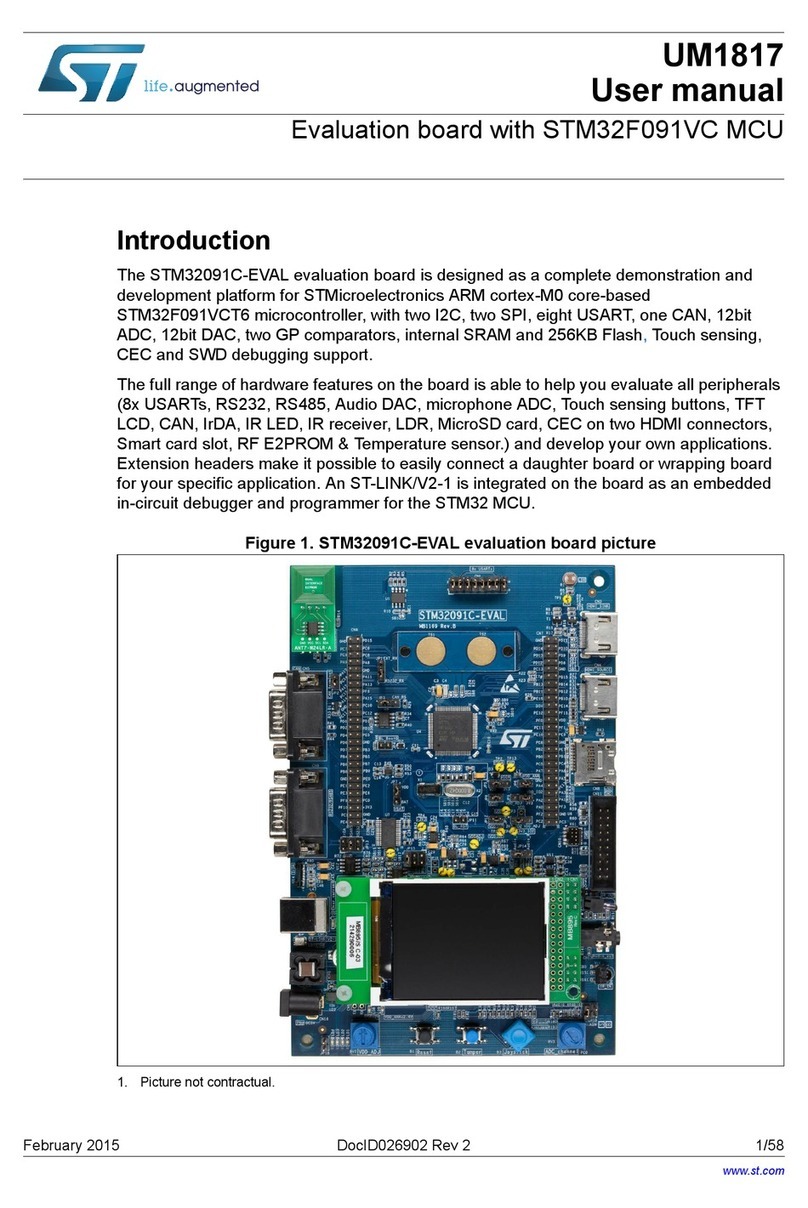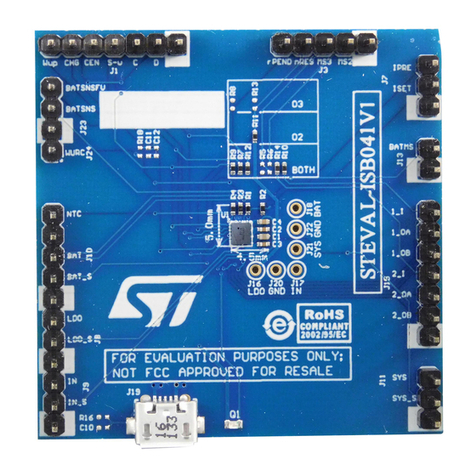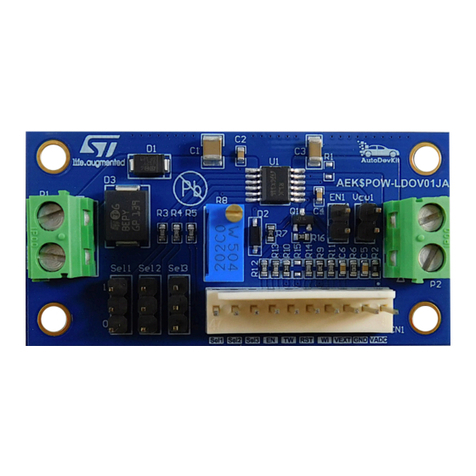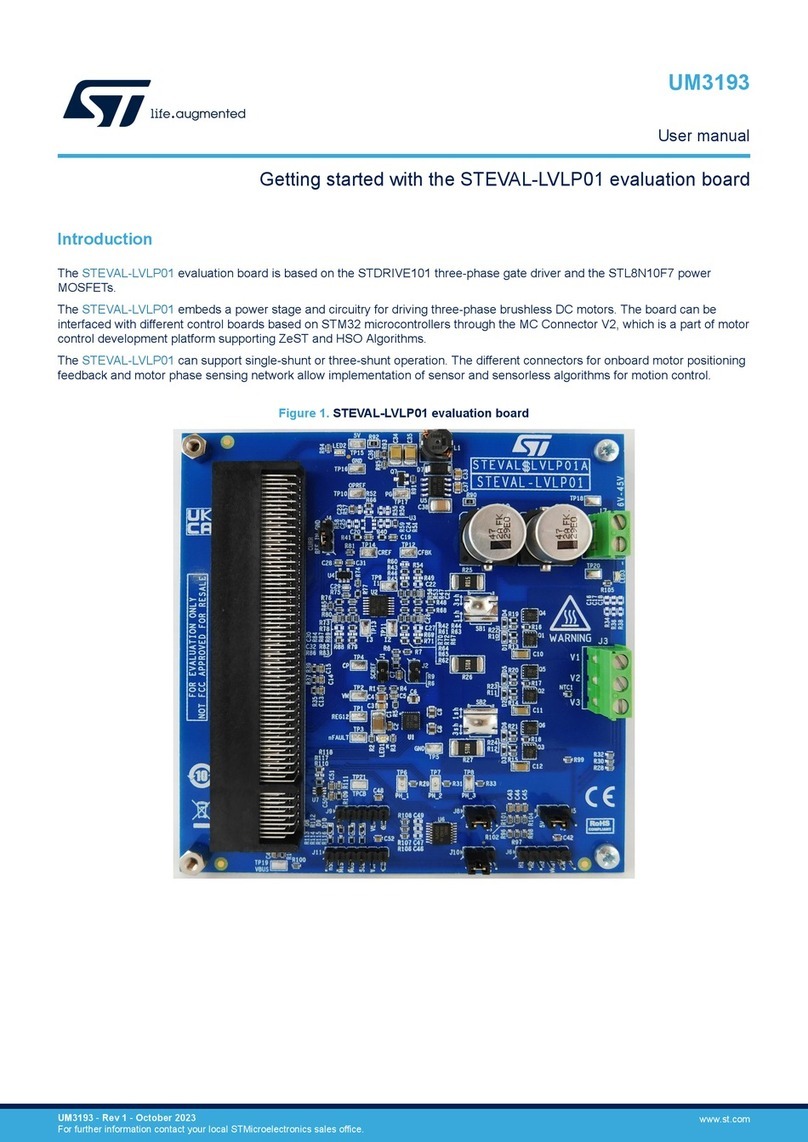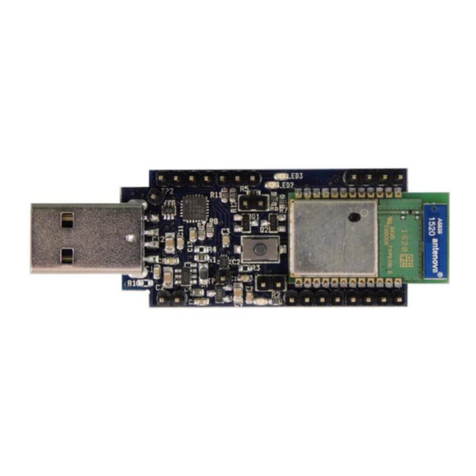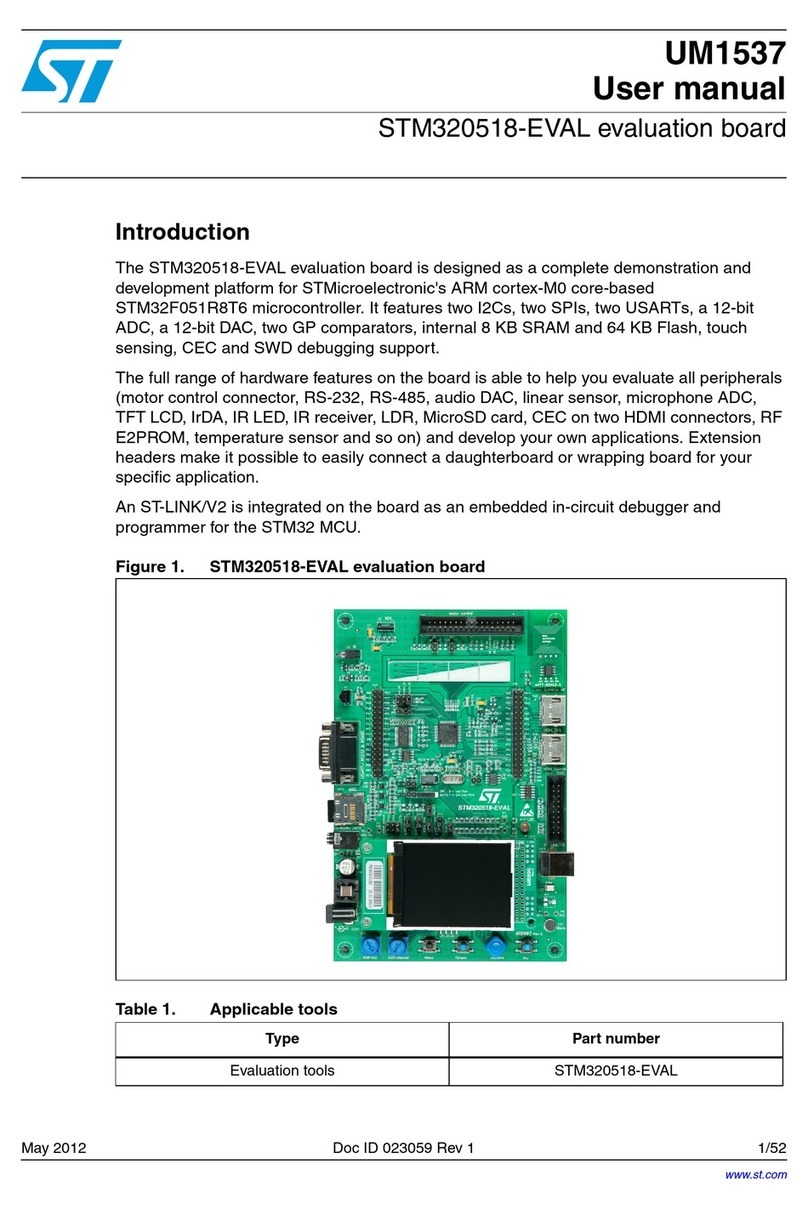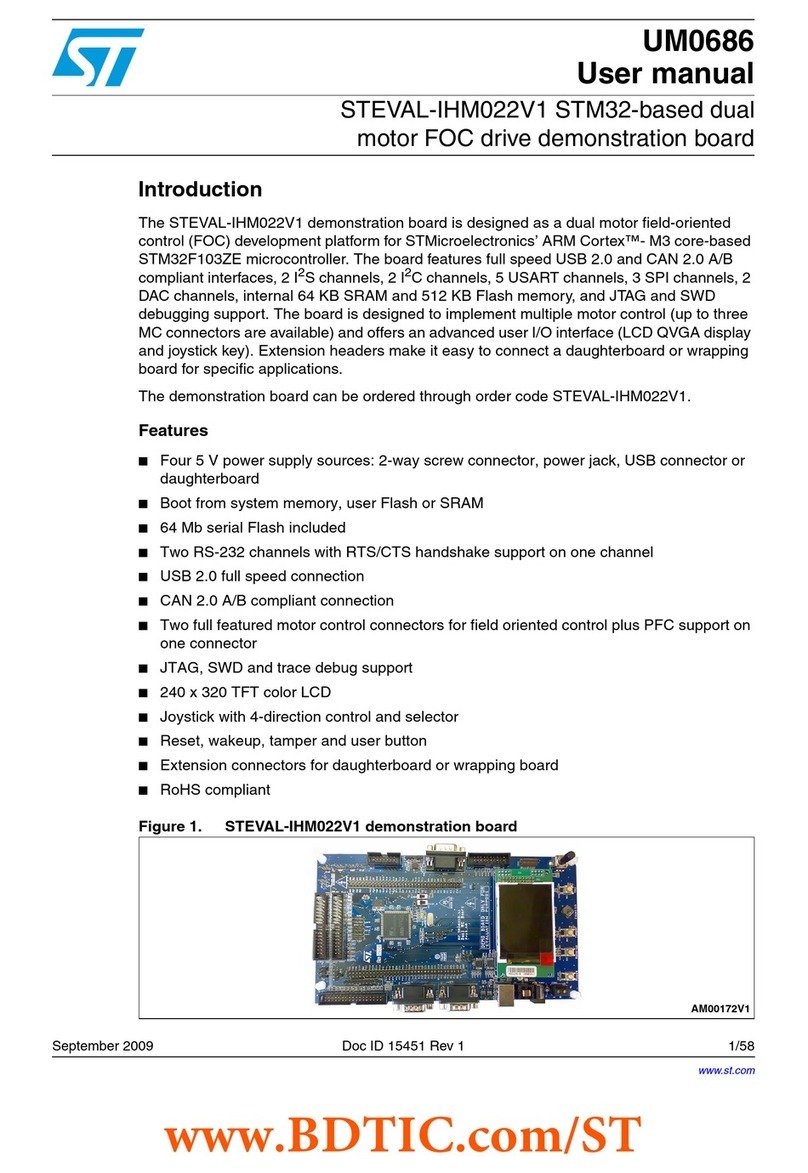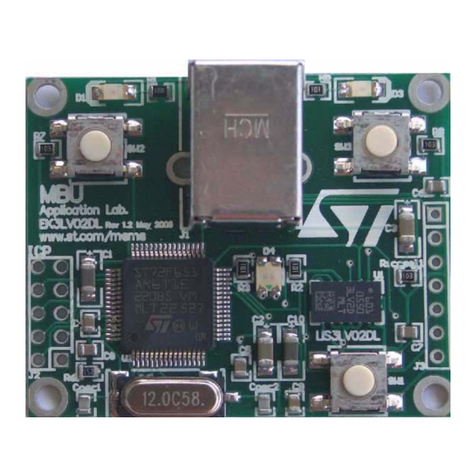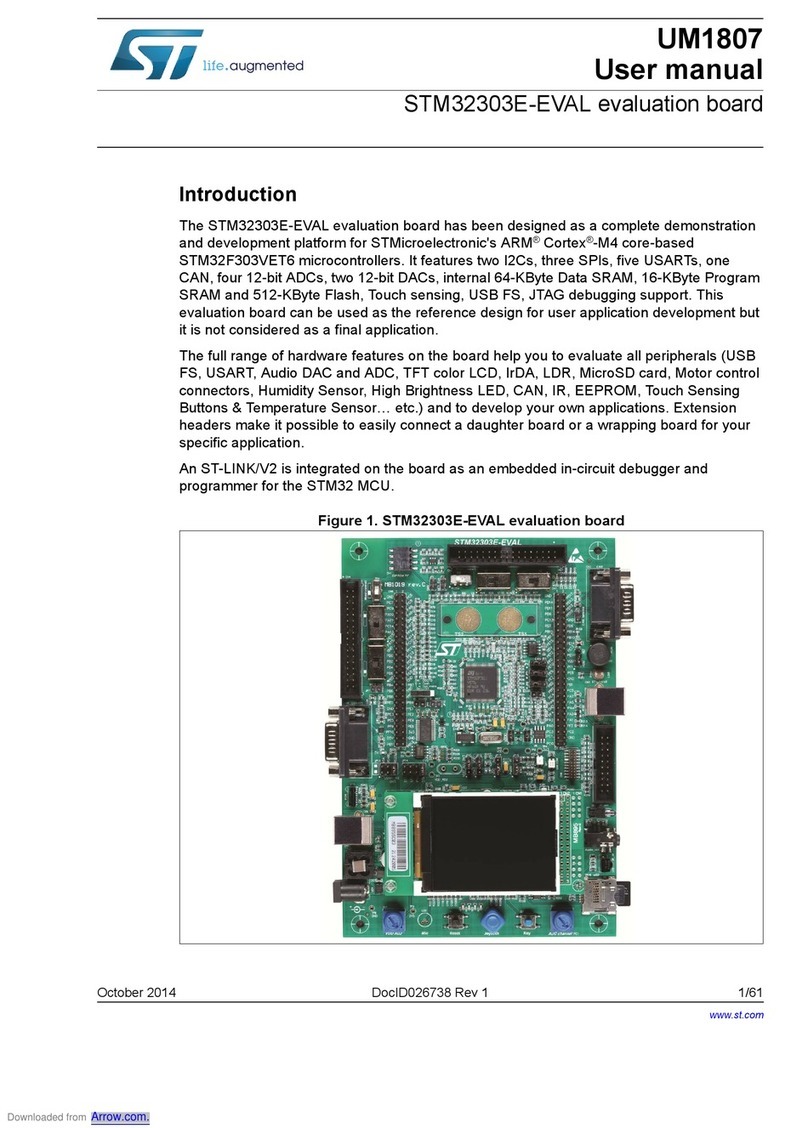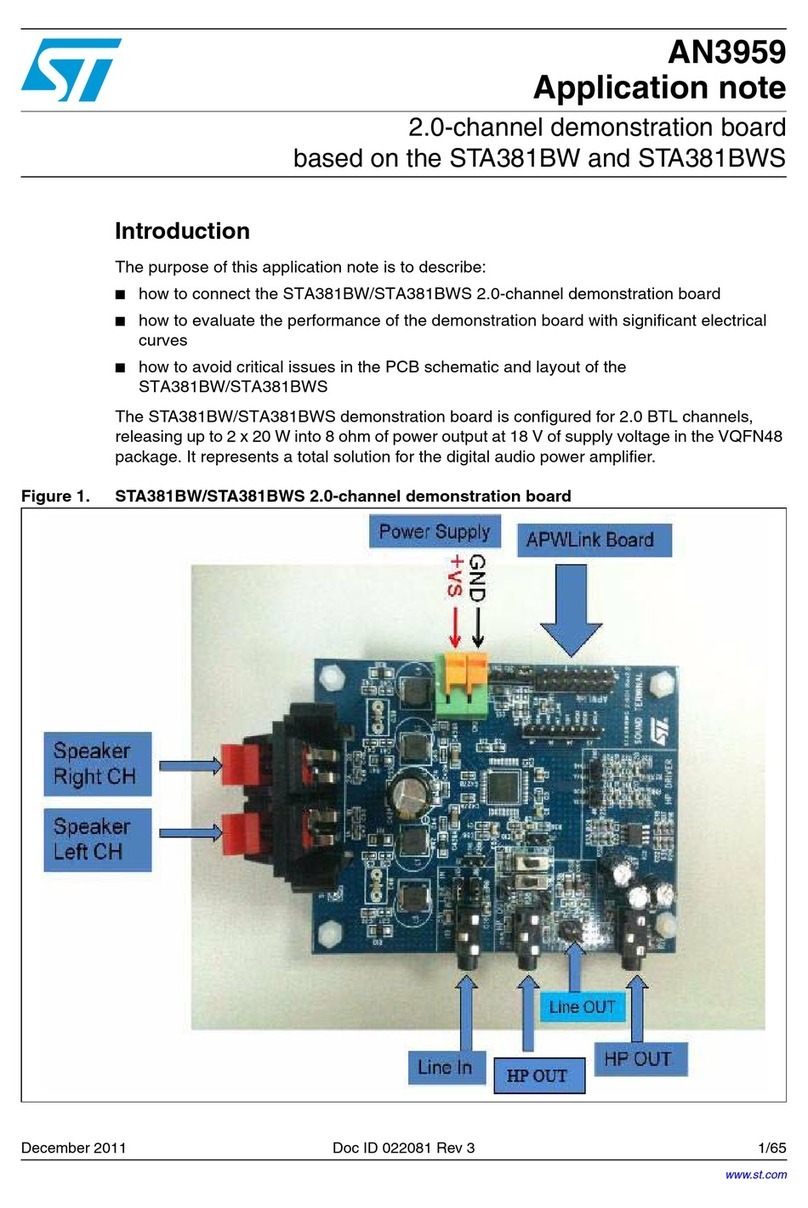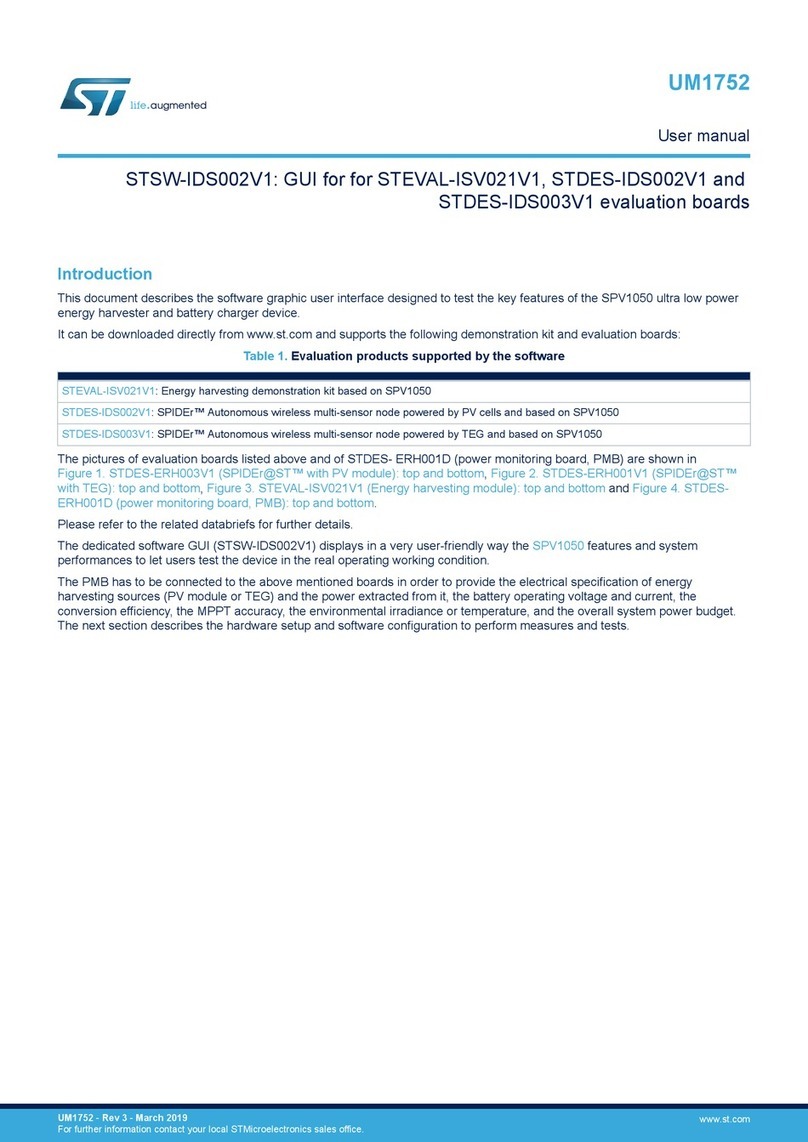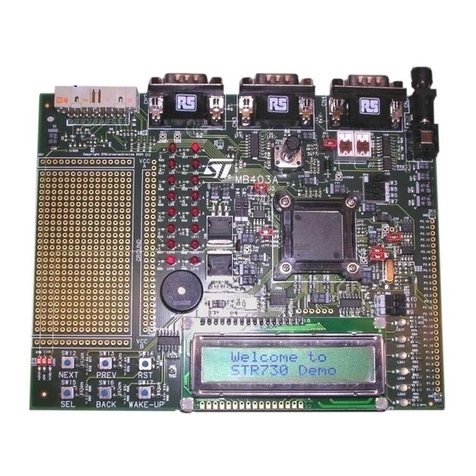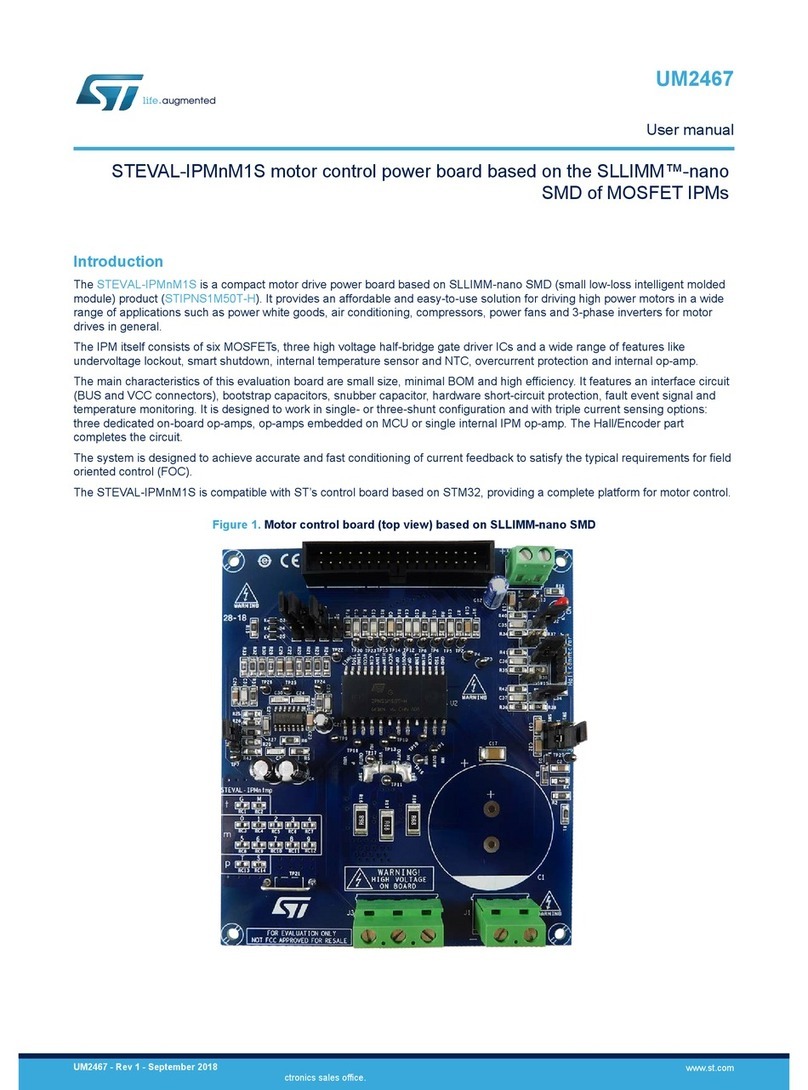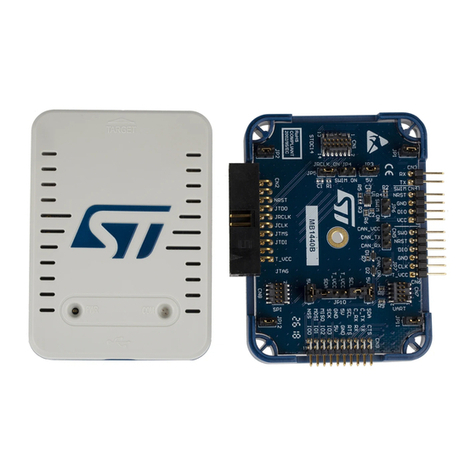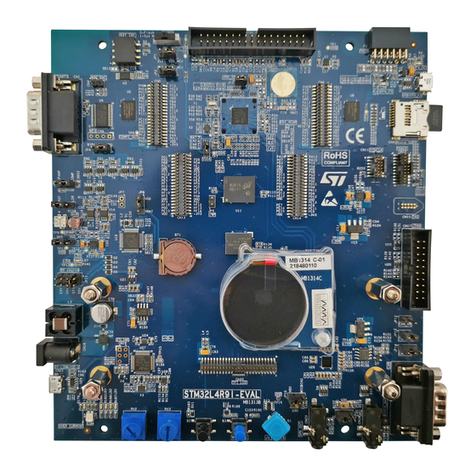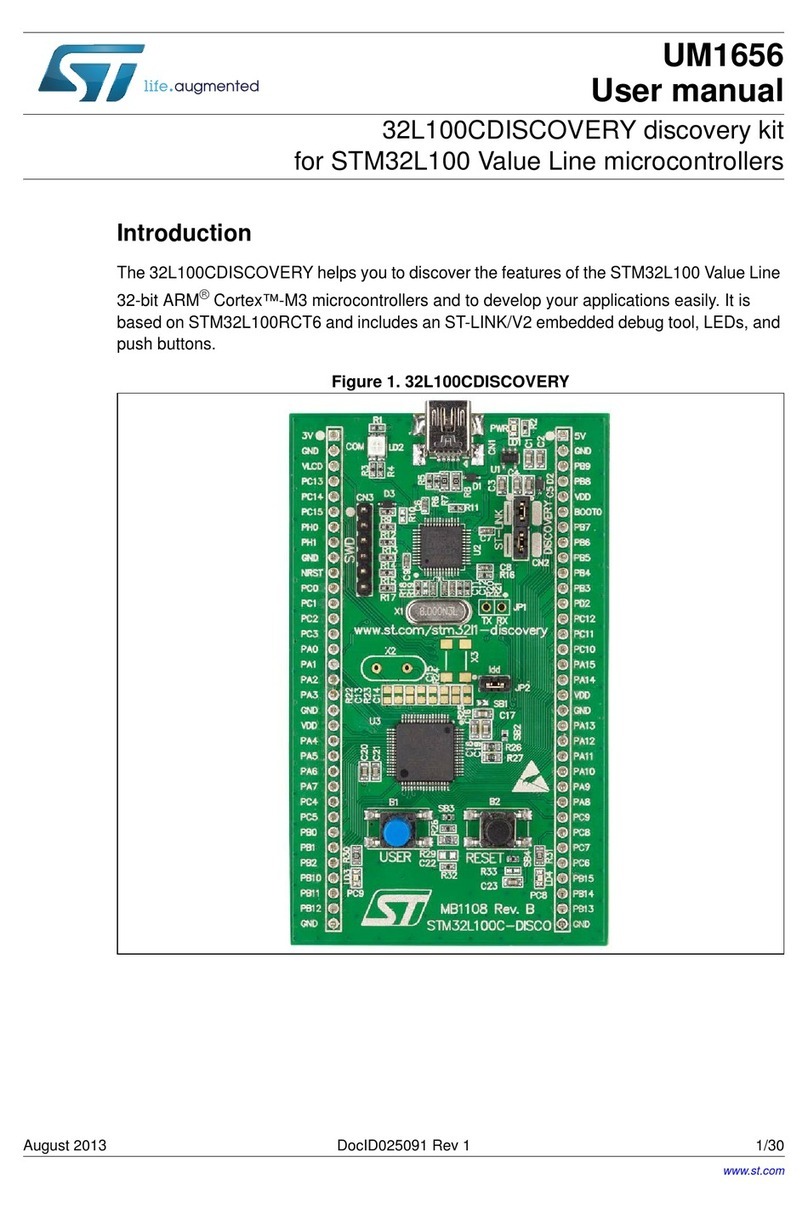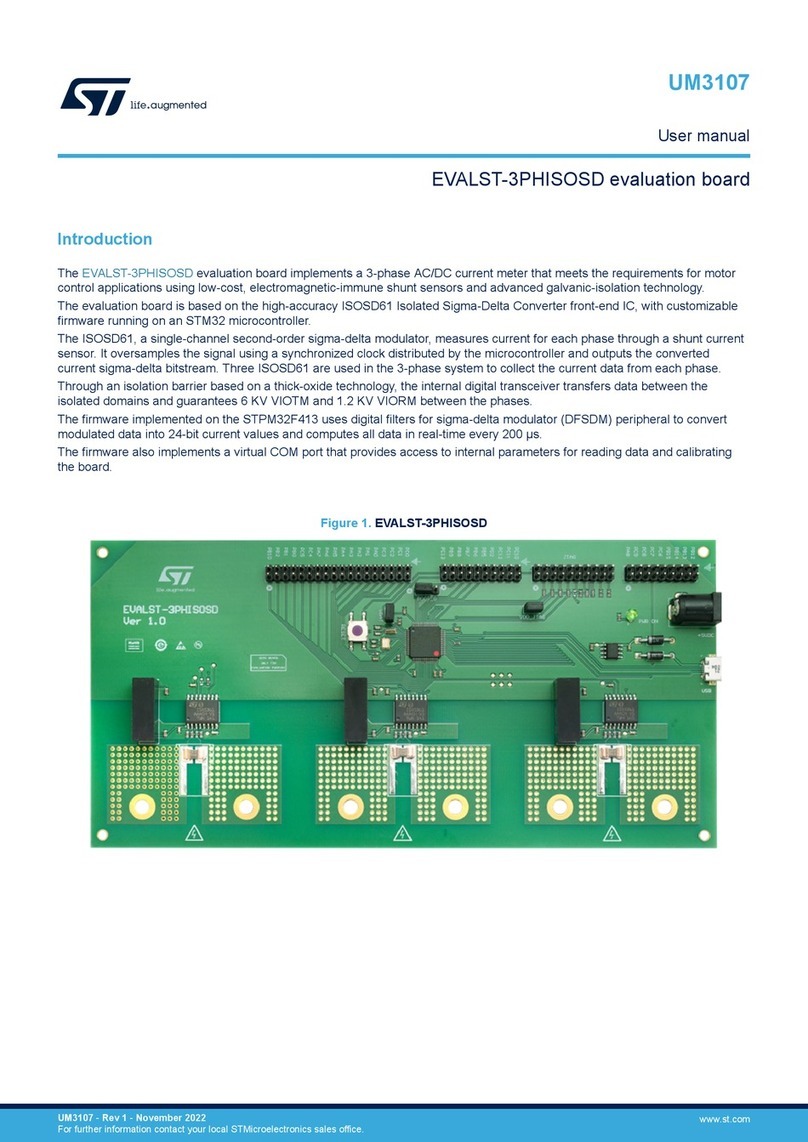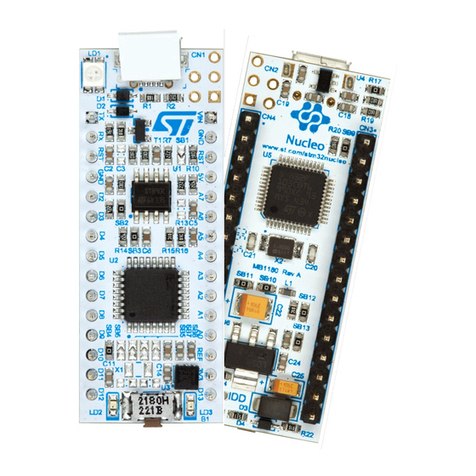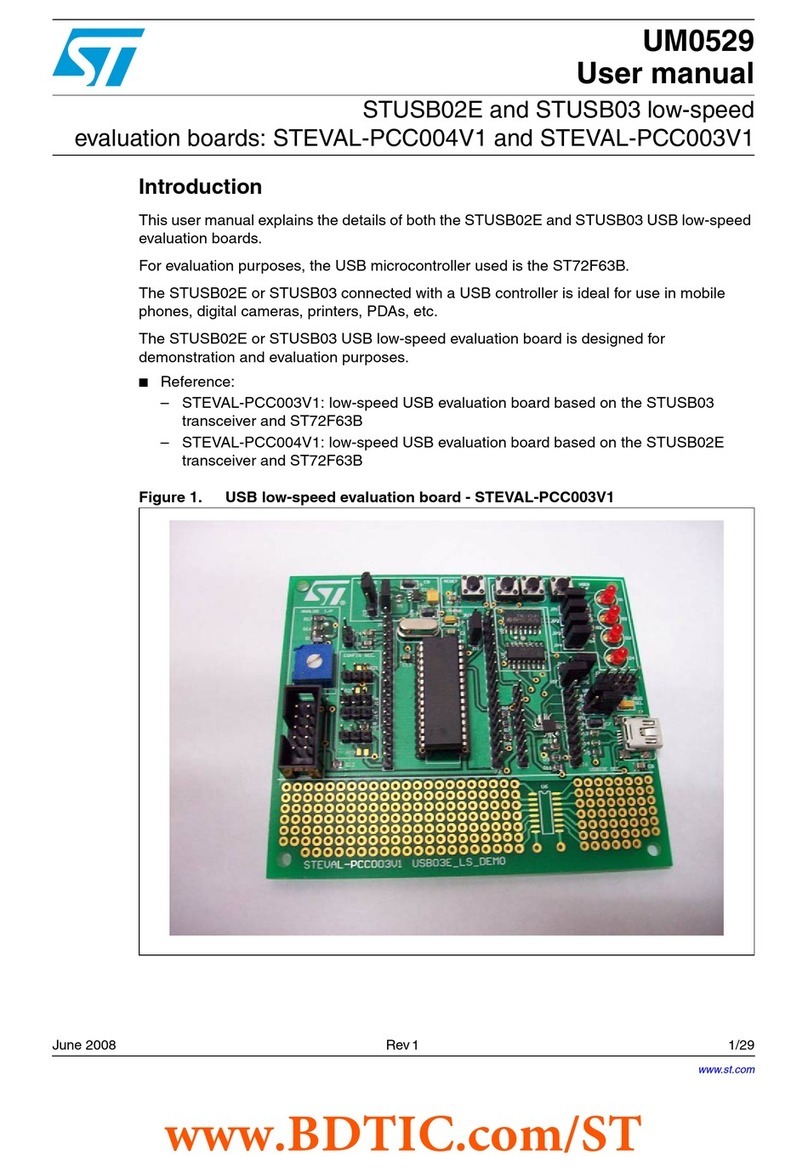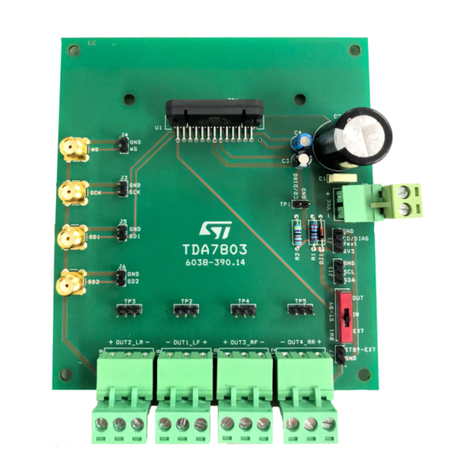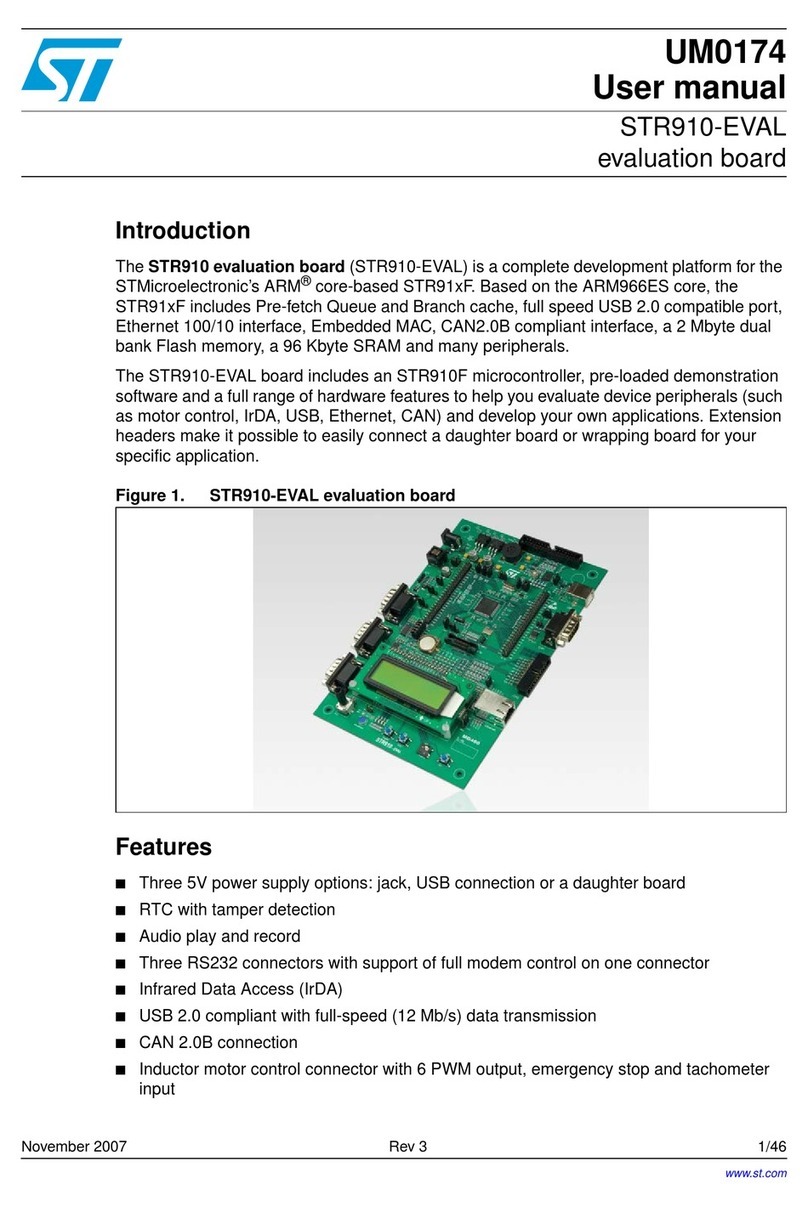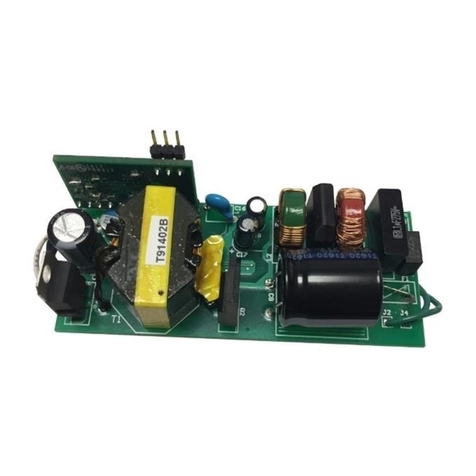
DocID030512 Rev 1 5/69
UM2199 List of figures
5
List of figures
Figure 1. STM32H753I-EVAL Evaluation board (top view) . . . . . . . . . . . . . . . . . . . . . . . . . . . . . . . . . 1
Figure 2. Hardware block diagram . . . . . . . . . . . . . . . . . . . . . . . . . . . . . . . . . . . . . . . . . . . . . . . . . . . . 9
Figure 3. STM32H753I-EVAL Evaluation board (top side) . . . . . . . . . . . . . . . . . . . . . . . . . . . . . . . . 10
Figure 4. STM32H753I-EVAL Evaluation board mechanical drawing . . . . . . . . . . . . . . . . . . . . . . . . 11
Figure 5. USB composite device . . . . . . . . . . . . . . . . . . . . . . . . . . . . . . . . . . . . . . . . . . . . . . . . . . . . 13
Figure 6. Orientation setting of 5.7-inch LCD daughterboard . . . . . . . . . . . . . . . . . . . . . . . . . . . . . . 25
Figure 7. Ethernet RJ45 connector CN1 (front view) . . . . . . . . . . . . . . . . . . . . . . . . . . . . . . . . . . . . . 26
Figure 8. RS232 connector CN2 (front view) . . . . . . . . . . . . . . . . . . . . . . . . . . . . . . . . . . . . . . . . . . . 26
Figure 9. CAN D-type, 9-pin connector CN3 (front view). . . . . . . . . . . . . . . . . . . . . . . . . . . . . . . . . . 27
Figure 10. I2C EXT connector CN4 (front view) . . . . . . . . . . . . . . . . . . . . . . . . . . . . . . . . . . . . . . . . . 27
Figure 11. Analog input-output connector CN5 (top view) . . . . . . . . . . . . . . . . . . . . . . . . . . . . . . . . . . 28
Figure 12. ETM trace debugging connector CN8 (top view) . . . . . . . . . . . . . . . . . . . . . . . . . . . . . . . . 33
Figure 13. JTAG/SWD debugging connector CN9 (top view) . . . . . . . . . . . . . . . . . . . . . . . . . . . . . . . 33
Figure 14. Power supply connector CN10 (front view) . . . . . . . . . . . . . . . . . . . . . . . . . . . . . . . . . . . . 34
Figure 15. microSD connector (top view). . . . . . . . . . . . . . . . . . . . . . . . . . . . . . . . . . . . . . . . . . . . . . . 37
Figure 16. USB OTG HS Micro-AB connector CN14 (front view) . . . . . . . . . . . . . . . . . . . . . . . . . . . . 38
Figure 17. USB OTG FS Micro-AB connector CN16 (front view). . . . . . . . . . . . . . . . . . . . . . . . . . . . . 39
Figure 18. USB OTG FS Micro-AB connector CN18 (front view). . . . . . . . . . . . . . . . . . . . . . . . . . . . . 39
Figure 19. USB Micro-B connector CN23 (front view) . . . . . . . . . . . . . . . . . . . . . . . . . . . . . . . . . . . . . 40
Figure 20. MEMS microphone coupon connectors CN25 and CN26 (top view) . . . . . . . . . . . . . . . . . 41
Figure 21. STM32H753I-EVAL Evaluation board . . . . . . . . . . . . . . . . . . . . . . . . . . . . . . . . . . . . . . . . 49
Figure 22. STM32H753I-EVAL MCU . . . . . . . . . . . . . . . . . . . . . . . . . . . . . . . . . . . . . . . . . . . . . . . . . . 50
Figure 23. Power. . . . . . . . . . . . . . . . . . . . . . . . . . . . . . . . . . . . . . . . . . . . . . . . . . . . . . . . . . . . . . . . . 51
Figure 24. SRAM, FLASH and SDRAM . . . . . . . . . . . . . . . . . . . . . . . . . . . . . . . . . . . . . . . . . . . . . . . . 52
Figure 25. Audio. . . . . . . . . . . . . . . . . . . . . . . . . . . . . . . . . . . . . . . . . . . . . . . . . . . . . . . . . . . . . . . . . . 53
Figure 26. LCD connectors . . . . . . . . . . . . . . . . . . . . . . . . . . . . . . . . . . . . . . . . . . . . . . . . . . . . . . . . . 54
Figure 27. Ethernet . . . . . . . . . . . . . . . . . . . . . . . . . . . . . . . . . . . . . . . . . . . . . . . . . . . . . . . . . . . . . . . 55
Figure 28. USB OTG HS . . . . . . . . . . . . . . . . . . . . . . . . . . . . . . . . . . . . . . . . . . . . . . . . . . . . . . . . . . . 56
Figure 29. USB OTG FS . . . . . . . . . . . . . . . . . . . . . . . . . . . . . . . . . . . . . . . . . . . . . . . . . . . . . . . . . . . 57
Figure 30. RS232. . . . . . . . . . . . . . . . . . . . . . . . . . . . . . . . . . . . . . . . . . . . . . . . . . . . . . . . . . . . . . . . . 58
Figure 31. FDCAN and QSPI . . . . . . . . . . . . . . . . . . . . . . . . . . . . . . . . . . . . . . . . . . . . . . . . . . . . . . . . 59
Figure 32. microSD 3.0 card . . . . . . . . . . . . . . . . . . . . . . . . . . . . . . . . . . . . . . . . . . . . . . . . . . . . . . . . 60
Figure 33. Peripherals . . . . . . . . . . . . . . . . . . . . . . . . . . . . . . . . . . . . . . . . . . . . . . . . . . . . . . . . . . . . . 61
Figure 34. Extension connectors . . . . . . . . . . . . . . . . . . . . . . . . . . . . . . . . . . . . . . . . . . . . . . . . . . . . . 62
Figure 35. ST-LINK/V2-1 . . . . . . . . . . . . . . . . . . . . . . . . . . . . . . . . . . . . . . . . . . . . . . . . . . . . . . . . . . . 63
Figure 36. MFX . . . . . . . . . . . . . . . . . . . . . . . . . . . . . . . . . . . . . . . . . . . . . . . . . . . . . . . . . . . . . . . . . . 64
Figure 37. JTAG and trace. . . . . . . . . . . . . . . . . . . . . . . . . . . . . . . . . . . . . . . . . . . . . . . . . . . . . . . . . . 65
Figure 38. 5.7” LCD board . . . . . . . . . . . . . . . . . . . . . . . . . . . . . . . . . . . . . . . . . . . . . . . . . . . . . . . . . . 66
